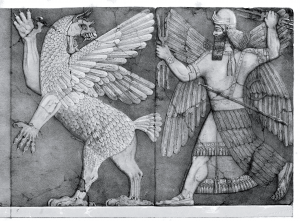Winner of the Fall 2016 StMU History Media Award for
Best Use of Scholarship
Best Article in the Category of “World History”
Best Use of Primary Sources
When I knew I couldn’t suffer another moment of pain and tears fell on my bloody bindings, my mother spoke softly into my ear, encouraging me to go one more hour, one more day, one more week, reminding me of the rewards I would have if I carried on a little longer. In this way, she taught me how to endure—not just the physical trials of footbinding or childbearing, but the more torturous pain of the heart, mind, and soul.1
More often than necessary, women are consumed with the idea of infatuation. Every culture has its own form of standards that pertain to women and what constitutes beauty. Although the world is slightly more accepting now, women used to go to extreme lengths to achieve an image that would be deemed attractive. In the Chinese culture, foot binding was that well-known beauty expectation for centuries. What started off as a celebrity fad, turned into a way of determining social status and eventually an all-around beauty expectation. 2 The objective of foot binding was for women to have the smallest foot possible, starting at very young ages. Not only was this a painful process for girls as young as five years, but it also promoted the idea that women must mutilate their bodies to become appealing to men. At some point in time, women began to just accept that this was something that was supposed to be done in order to be attractive. Often referred to as “lotus boats” or “golden lotuses,” bound feet started as a fad for the famous, and slowly made its way to becoming the social norm.3

This practice began around the tenth century with women in the entertainment business. These women were adored for their tiny arched feet and were seen by men to be much more attractive than middle class women with average feet. As these dancers were gaining an audience, the idea of “lotus feet” was becoming familiar. Not long after these performers expressed their “beauty,” foot binding became a norm for women who wanted to fit in and even for those who had a desire to find a husband.4 This painful process consisted of the breaking of young girl’s toes to form the desired triangular shape. Then the arch of the foot would be bent horizontally from the toes all the way to the heel. As if this was not painful enough, the girls were forced to walk on their feet to intensify the arch, breaking the foot even more. After all of this, the foot would be wrapped to maintain the shape of it as well as prevent any sort of deviation.5

Although this practice was around for centuries, it was only a matter of time before someone realized how inhumane and cruel it really was. Thankfully, many people began to protest against foot binding, forming “anti-foot binding organizations” to raise awareness on the inhumanity of binding women’s feet. By the 1950’s, laws were passed, allowing women to unbind their feet. Although hesitant at first, the trend slowly declined. Many women protested to unbinding their feet, due to the fact that it had been a social norm a thousand years. However, the movement against foot binding continued and eventually the last of the factories that make the tiny shoes were shut down, disabling the women from continuing the custom. Today, foot binding is no longer practiced and the only women who continue to maintain the tiny feet are those elder women who refuse to let go of the past.6
- Lisa See, Snow Flower and the Secret Fan (New York: Random House Publishers, 2005), 3-4. ↵
- Yaodong Gu et al., “Foot Loading Characteristics of Chinese Bound Feet Women: A Comparative Analysis,” PLoS ONE 10, no. 4 (April 2015): 1–9, doi:10.1371/journal.pone.0121695. ↵
- Yu-ning Li, Chinese Women Through Chinese Eyes (New York: Routledge, 2015), 125-127. ↵
- Women in the Middle Ages: An Encyclopedia, 2004, s.v. “Footbinding (Late 10th Century-early 20th Century),” by Patricia Buckley Ebrey. ↵
- Amanda Foreman, “Why Footbinding Persisted in China for a Millennium,” Smithsonian, accessed November 8, 2016, http://www.smithsonianmag.com/history/why-footbinding-persisted-china-millennium-180953971/. ↵
- “Women with Bound Feet in China,” Reshaping the Body: Clothing & Cultural Practice, accessed November 8, 2016, http://exhibits.hsl.virginia.edu/clothes/lady_bound/. ↵



189 comments
Elias Melchor
It’s interesting to read how women would basically torture themselves to look “beautiful”. I did not know that men found more attractiveness in a women other small feet than in a women that in a middle class women with average sized feet. This was a very good article, good job.
Aurora Torres
I can not believe that this actually happened! Just by looking a the image with the small red shoes I was surprised of how small the shoes were and that adult ladies actually wore these shoes. The lengths woman would do just to be accepted for beauty and the attention from men is crazy. And to actually go through all the pain by binding and breaking bones has me in shock. Thank you for this article. I guess it’s true beauty is pain.
Victoria Sanchez
This is an extremely interesting article. You provided great information for the reasons and traditions of the foot binding tradition. I can’t imagine what kind of pain these women must have been in, and all for the sake of appearing attractive or finding a husband…what a crazy thought! This practice is outrageous and I was glad to read that it eventually went out of style. Well done!
Mehmet Samuk
Waow, very strong quote in the beginning of the article. It grabbed my attention very well and throughout the article, I enjoyed reading. I don’t understand why men thought women were more attractive after harming their bodies and why women wanted to go through these painful and unnecessary processes.
Mariana Sandoval
While I have heard of foot binding before, this was a good article to introduce foot binding to people that haven’t heard of it. I think you capture the inhumanness of the practice really well and thankfully it has gone out of style. It is amazing that women were willing to do this to their bodies and endure a great amount of torture just to get smaller feet. While it was a part of their culture, is still sad to see that women would do anything to be up to par with societal expectations.
Kimberly Rios
Great article! I find it fascinating at how far women will go to keep up with the latest beauty standard whether it be foot binding in the early 1900, as stated in in your article, or this centuries beauty standards that makes women feel as if they should get some form of plastic surgery. It is incredibly interesting to have learned that this was an actual beauty standard as it is a very odd and painful one, but yet again it amazes me what women will do to achieve “beauty”. Your article was very informative in shedding light on this topic, keep up the good work!
Soki Salazar
It was interesting to read about the custom of foot binding because I had heard of it before but I did not know where it originated. It was sad to read about how women felt like they needed to mutilate their bodies in order to be considered attractive enough to find a husband. Reading about the process of creating their “lotus [feet]” made me so squeamish because I could only imagine how painful it was for them! Great article!
Erik Rodriguez
Wow! That is just CRAZY! I had no idea about this Chinese norm. It blows my mind people centuries ago would actually believe into this horrible deed! I cannot imagine the excruciating pain and discomfort of trying to fit your foot into this tiny little shoe from a very young age! It really is quite amazing how far the human intellect can be influenced. I have seen and heard about crazy rituals across the world, but this one is definitely one of the most extreme I have ever learned about.
Awesome article! VERY informative and detailed!
Keep up the good work!!
Ivanna
This was an incredible article! It still fascinates me the extremes women are willing to go in order to achieve societal beauty standards. However, I don’t find Chinese foot binding fascinating at all. It was an extremely painful and traumatizing experience for young girls. It’s relief to know that anti-binding organizations were created in order to stop this unnatural custom. Keep up the good work!
Joshua Tinajero
Its saddens me to know that people would go to these lengths in order to be viewed as attractive in the eyes of a toxic society. It’s amazing how some of the elderly women continue to practice the mutilating process, and still see it as an applicable practice in order to gain beauty status. Their insecurities towards societies opinion has greatly affected their way of life, and has ultimately scared their minds, as well as their feet. Great Article, it was well written and very informative!